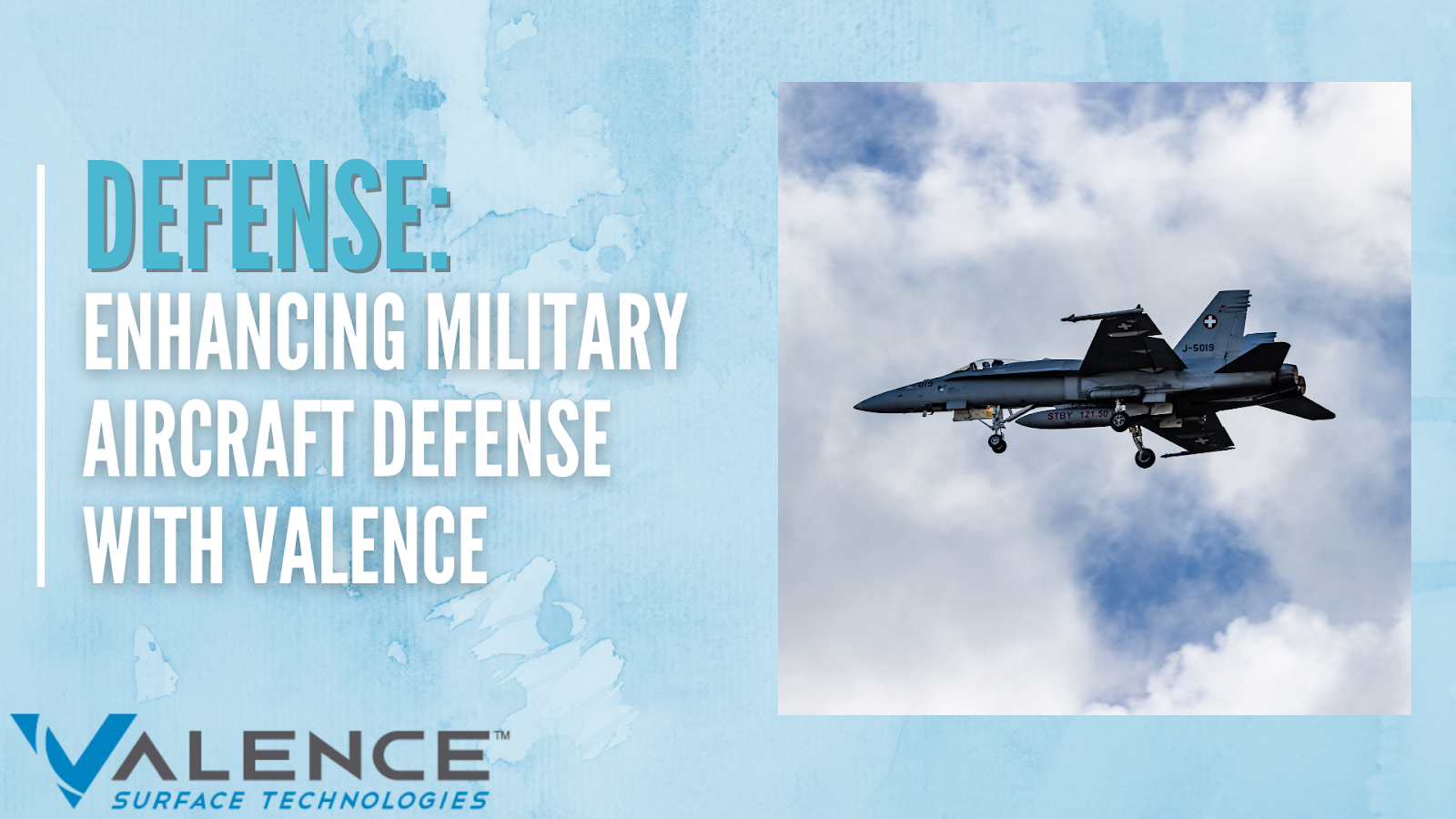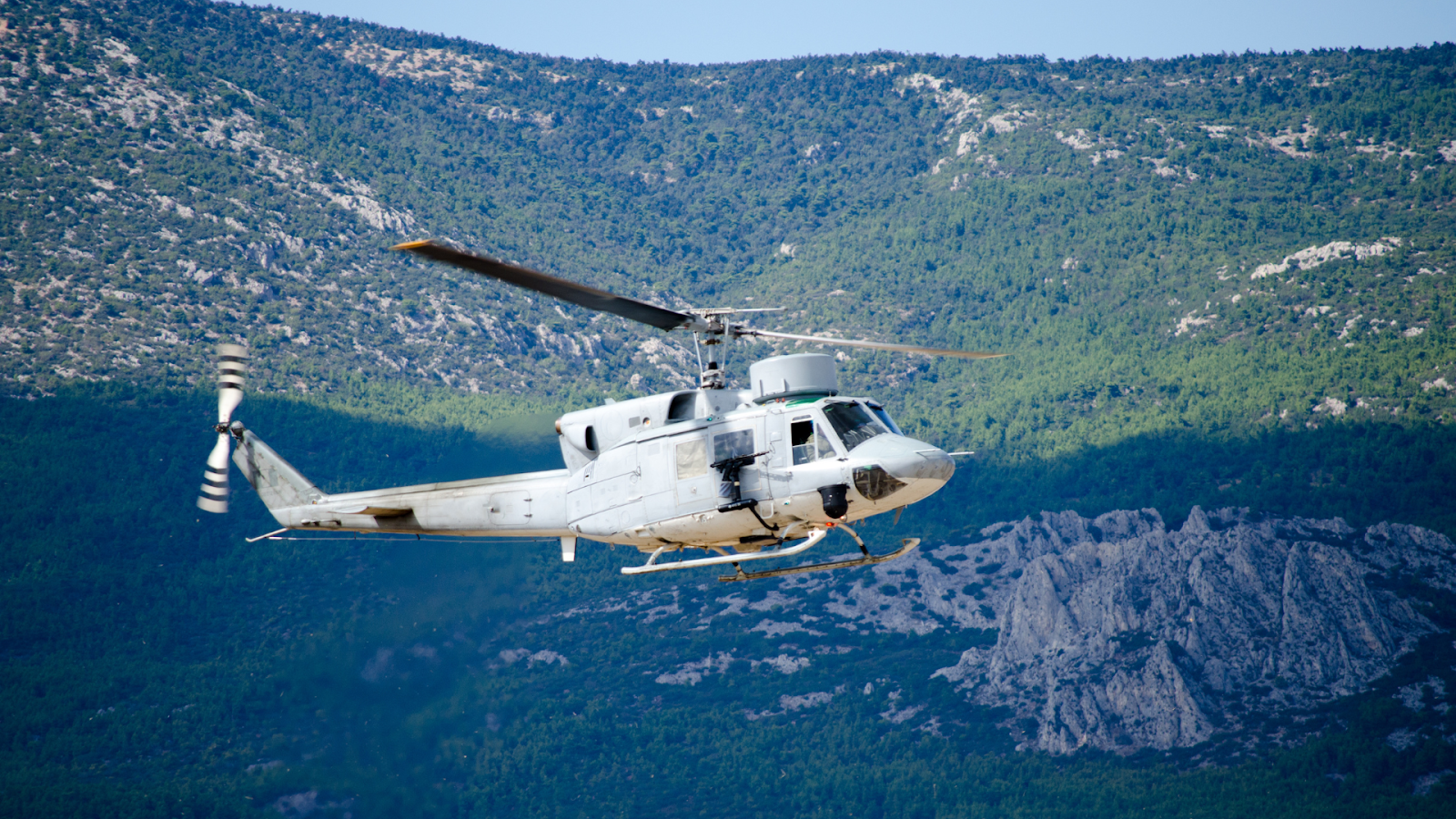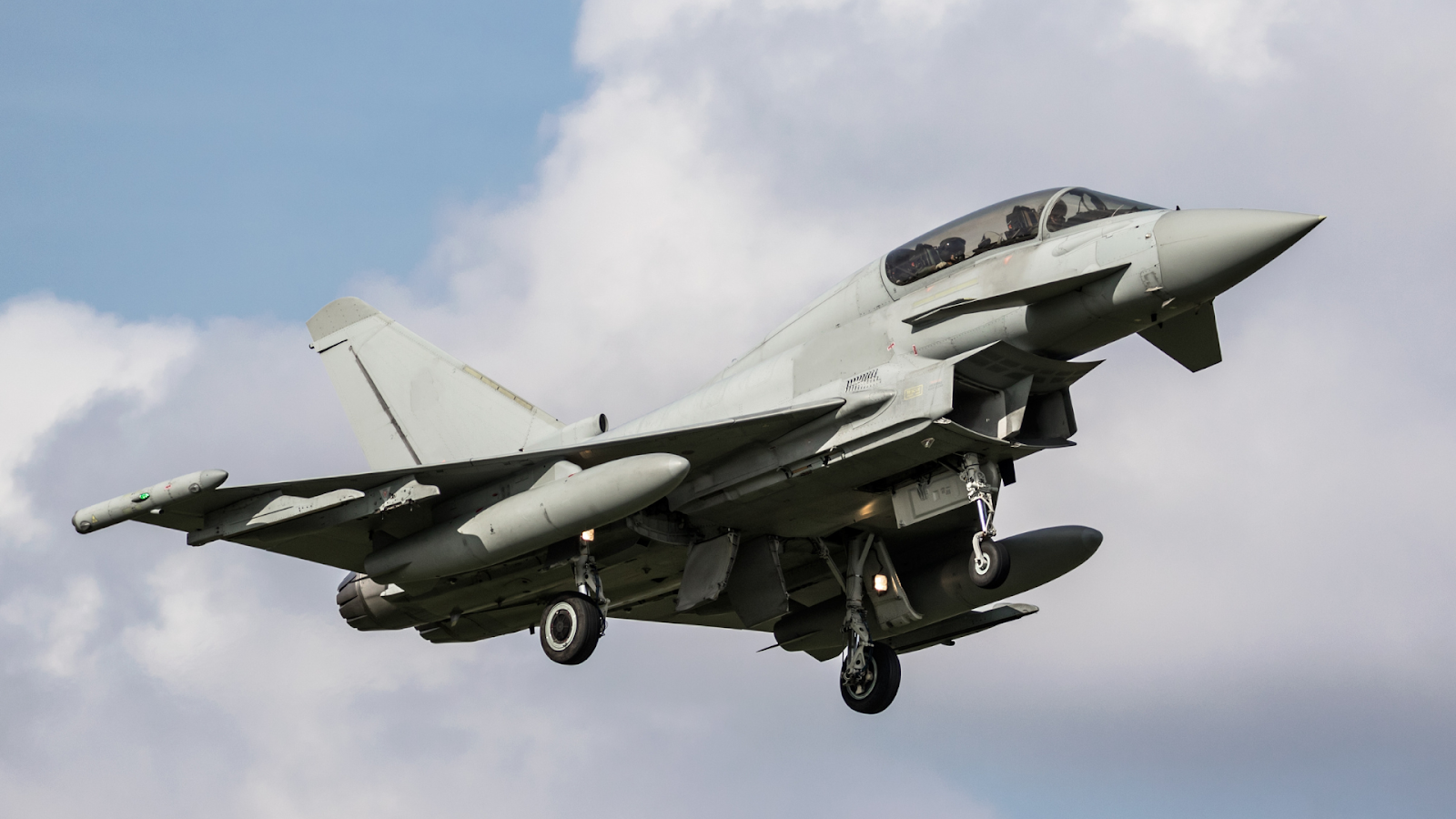Defense
Fixed-wing, Helicopters, Weapon Systems, UAVs
Fixed Wing
Boeing
P-8 Posiedon
Northrop Grumman
B-21 Raider
B-2 Spirit
Lockheed Martin
Rotor
Boeing
Bell Helicopter
UH-1 SuperHuey
V-280 Valor
MD Helicopter
UAV
General Atomics
Northrop Grumman
Key Takeaways
- The U.S. Department of Defense is advancing its defense capabilities with a focus on various aircraft types, including fixed-wing aircraft, helicopters, weapon systems, and UAVs.
- Key programs like the Lockheed Martin F-35, Boeing KC-46A Tanker, and Northrop Grumman B-21 Long-Range Bomber play significant roles in shaping the future of defense.
- Ongoing support for existing programs such as the Lockheed Martin F-16, Sikorsky Blackhawk, Boeing F-18, and Apache helicopters remains critical for maintaining national defense readiness.

In the ever-evolving realm of military technology, the integration of Valence into military aircraft has emerged as a groundbreaking advancement. Companies seeking top-tier surface finishing solutions in the commercial aerospace, defense, space, and satellite industries are increasingly turning to Valence for enhanced military aircraft defense. In this article, we delve into the key facets of Valence integration, the various types of military aircraft, international collaborations in Valence defense, maintenance and upkeep of Valence systems, and the cost-effectiveness of these innovations.
Valence’s Impact On Elevating Military Aircraft
Valence Surface Technologies plays a pivotal role in the advancement of military aerospace capabilities. The U.S. Department of Defense is ushering in a new era of cutting-edge fighters, aerial tankers, and bombers. Our significant contributions are evident in crucial programs like the Lockheed Martin F-35, Boeing KC-46A Tanker, and the Northrop Grumman B-21 Long-Range Bomber.
Furthermore, we deliver mission-critical support to existing programs including the Lockheed Martin F-16 and Sikorsky Blackhawk, as well as the Boeing F-18 and Apache. This underscores our commitment to enhancing the performance and longevity of military aircraft, ensuring they remain at the forefront of global defense efforts.
Elevate Your Aerospace Defense With Valence!Valence Surface Technologies stands at the forefront of aerospace innovation, offering you a completely integrated solution tailored to the aviation, defense, and space industries. As the world’s largest independent aerospace surface finishing company, we’re committed to being your most trusted partner in aerospace surface finishing. With Valence, you gain access to:
Discover the Valence advantage and let us take your aerospace surface finishing to new heights! |
Valence Integration Into Military Aircraft
Valence Surface Technologies plays a crucial role in enhancing military aircraft performance. Their expertise lies in providing specialized coatings and treatments. Here’s how they contribute:
- Corrosion Protection: Valence’s coatings shield critical components from corrosive elements, extending the aircraft’s lifespan.
- Wear Resistance: They provide coatings that resist wear and tear, ensuring components remain reliable under high-stress conditions.
- Friction Reduction: Coatings reduce friction between moving parts, enhancing efficiency and performance, particularly in landing gear and control surfaces.
- Thermal Protection: Their treatments safeguard components from extreme temperatures, preventing overheating.
- Erosion Resistance: Specialized coatings protect against high-speed airflow, preventing erosion of surfaces.
- EMI Shielding: They offer coatings that shield sensitive electronics from electromagnetic interference, critical for operational integrity.
- Painting and Finishing: Valence provides tailored paint solutions, including camouflage or visibility-enhancing finishes.
- Compliance with Military Standards: Their solutions meet or exceed stringent military performance and durability standards.
Types Of Military Aircraft
Military aircraft come in a multitude of forms, each serving specific purposes. To attain a comprehensive understanding of Valence in military defense, it is essential to grasp the diversity of aircraft employed by defense agencies. Explore:
Northrop Grumman
Northrop Grumman is a leading defense and technology company, known for its advanced aerospace and defense systems, including aircraft, electronics, cybersecurity solutions, and various mission-critical technologies.
Lockheed Martin
Lockheed Martin is a prominent global security and aerospace company, renowned for its development and production of advanced military aircraft, space exploration technologies, and cutting-edge defense systems.
Bell Helicopter
Bell Helicopter, a subsidiary of Textron Inc., is a renowned manufacturer of rotorcraft, including helicopters and tiltrotor aircraft, offering a wide variety of solutions for both civilian and military applications.

MD Helicopter
MD Helicopters is a specialized helicopter manufacturer, known for producing light, versatile rotorcraft for a variety of missions, including law enforcement, emergency medical services, and military operations.
Maintenance And Upkeep Of Valence Systems
Maintaining Valence systems in peak condition is crucial for their effectiveness and longevity. Companies relying on these technologies must understand the ins and outs of upkeep, ensuring seamless operations and mission success. Consider:
- Routine Maintenance: Scheduled tasks, such as inspections, cleaning, and surface analysis, are essential to ensure system performance. Regular maintenance prevents wear and tear that can compromise aircraft defenses.
- Emergency Repairs: Addressing unforeseen issues swiftly and effectively is vital. Valence systems are designed for resilience, but timely repairs are critical to maintain operational readiness.
- Training Requirements: Ensuring personnel are equipped for proper system care is essential. Training programs are tailored to equip technicians and operators with the knowledge and skills to maintain Valence systems.
Cost-Effectiveness Of Valence
Investing in Valence’s surface finishing services for military aircraft defense not only enhances capabilities but also proves to be cost-effective in the long run. By providing advanced surface treatments and coatings, Valence significantly extends the lifespan of critical components, reducing the frequency of repairs and replacements. This not only results in substantial cost savings for defense forces but also ensures uninterrupted operational readiness. Valence’s expertise in cost-effective surface finishing techniques enables defense forces to allocate their resources more effectively, diverting funds towards other crucial defense initiatives. By leveraging Valence’s defense solutions, military aircraft can operate at their full potential while optimizing overall defense expenditure.
What Is Military Aircraft?
Military aircraft, often referred to as combat aircraft or warplanes, are a specialized category of aircraft designed and employed by armed forces for various defense-related purposes. These aircraft play a pivotal role in modern warfare, encompassing a wide range of models and configurations tailored to specific missions. Fighter jets, bombers, reconnaissance planes, transport aircraft, and drones are among the key types of military aircraft. They serve critical roles in achieving air superiority, delivering strategic strikes, conducting reconnaissance, and supporting ground troops.

The Importance Of Aircraft Defense
The importance of aircraft defense cannot be overstated in the context of modern military operations. Effective aircraft defense ensures the safety and security of a nation’s airspace and the success of its missions. In an era of evolving threats, military aircraft need to be equipped with advanced defense mechanisms to counter adversarial efforts to intercept, disable, or track them. Aircraft defense is not limited to countering external threats but also involves safeguarding the aircraft against environmental factors, mechanical failures, and cyberattacks.
How Does Valence Help With Military Aircraft?
Valence technology plays a pivotal role in enhancing military aircraft’s defensive capabilities. Its application involves advanced coatings, materials, and systems that contribute to improved aircraft performance and survivability. Valence helps by reducing an aircraft’s radar cross-section, making it less detectable to enemy radar systems. Electronic warfare systems integrated with Valence technology can disrupt and deceive enemy electronic systems, increasing an aircraft’s chances of survival in hostile environments.
Advantages Of Valence In Military Aircraft
Valence offers a range of advantages when integrated into military aircraft defense systems. These advantages include:
Increased Durability
Valence technology extends the lifespan of military aircraft by providing superior corrosion resistance, reducing maintenance needs and overall costs.
Improved Fuel Efficiency
By reducing aerodynamic drag and weight, Valence enhances fuel efficiency, increasing aircraft operational range and mission capabilities.
Adaptability
Valence technology can be tailored to fit different aircraft models, allowing for customized solutions to meet specific defense requirements.
Reduced Maintenance Workload
Valence coatings are designed for resilience, reducing the frequency and complexity of maintenance and repairs, ultimately lowering the workload for military personnel.
Enhanced Environmental Resilience
Valence’s advanced coatings provide a protective barrier against harsh environmental elements, ensuring aircraft remain operational in challenging conditions.
What Are The Alternatives To Military Aircraft?
While military aircraft remain a cornerstone of modern defense strategies, several alternatives exist in the realm of military defense. These alternatives can complement or, in some cases, replace traditional military aircraft. Some notable alternatives include:
- Unmanned Aerial Vehicles (UAVs): UAVs, commonly known as drones, are versatile aircraft used for reconnaissance, surveillance, and combat missions.
- Missiles and Rockets: Precision-guided missiles and rockets offer long-range strike capabilities and are often used in conjunction with aircraft.
- Satellites: Military satellites provide critical intelligence, communication, and navigation support to defense operations.
- Ground-Based Defense Systems: Anti-aircraft artillery, missile defense systems, and ground-based radars play essential roles in aircraft defense.
Final Thoughts On Military Aircraft
Military aircraft play a pivotal role in modern defense strategies, providing crucial capabilities such as air superiority, reconnaissance, strategic strikes, and force projection. The integration of Valence Surface Technologies into military aircraft defense is vital for enhancing the durability, performance, and longevity of these high-tech machines.
As the world’s largest independent aerospace product finishing company, Valence specializes in providing comprehensive surface finishing solutions tailored specifically for the aviation, defense, and space industries. With expertise in advanced techniques like anodizing, coatings, and corrosion mitigation, Valence ensures that military aircraft are equipped to withstand the harshest operational environments.
Frequently Asked Questions About Military Aircraft
How does Valence technology contribute to reducing the acoustic signature of military aircraft?
Valence materials and coatings can dampen engine noise, reducing the acoustic signature and making the aircraft less detectable by auditory means.
Can Valence technology improve the resistance of military aircraft to extreme weather conditions?
Yes, Valence coatings provide weather-resistant properties that help protect the aircraft from the effects of extreme weather, including corrosion and environmental wear.
How long can military aircraft stay in the air?
The endurance of military aircraft varies depending on factors such as aircraft type, mission profile, payload, and fuel capacity. Some military aircraft can stay airborne for several hours, while others, like unmanned aerial vehicles, can have extended endurance of multiple days.
Can military aircraft refuel in mid-air?
Yes, many military aircraft are equipped with aerial refueling capabilities, allowing them to receive fuel from tanker aircraft while in flight. Aerial refueling significantly extends the operational range and endurance of military aircraft, enabling long-range missions and reducing the need for frequent landings to refuel.
How fast can military aircraft fly?
The speed of military aircraft varies depending on aircraft type and purpose. Fighter jets like the F-22 Raptor can fly at speeds exceeding Mach 2 (twice the speed of sound), which is well over 1,500 miles per hour (2,400 kilometers per hour). Strategic bombers, such as the B-2 Spirit, have a top speed of around Mach 0.9.
Can military aircraft land on aircraft carriers?
Yes, specific types of military aircraft, known as carrier-based aircraft, are designed with features that enable them to take off from and land on aircraft carriers. These aircraft have reinforced landing gear, arresting hooks, and folding wings to accommodate the unique requirements of carrier operations.
How do military aircraft communicate with ground forces?
Military aircraft use a combination of communication systems to relay information and maintain communication with ground forces. This includes secure radio systems, encrypted data links, and satellite communication to transmit messages, coordinate operations, and receive real-time updates from ground units.
What training do pilots of military aircraft undergo?
Pilots of military aircraft undergo extensive training that includes classroom instruction, simulator exercises, and practical flight training. They receive specialized instruction in areas such as aerodynamics, navigation, weapons systems operation, mission planning, and emergency procedures. Training varies based on aircraft type and the specific role the pilot will fulfill.
Can military aircraft be used for civilian purposes?
While military aircraft are primarily intended for defense and combat applications, they can also support civilian purposes in certain scenarios. For example, military aircraft can be used for search and rescue operations, disaster relief efforts, aerial firefighting, and humanitarian mission support.
How often are military aircraft upgraded or replaced?
The upgrade or replacement of military aircraft depends on several factors, including technological advancements, changing defense requirements, budget constraints, and the overall lifecycle of the aircraft. These decisions are made by defense authorities based on strategic priorities, the availability of funds, and the analysis of specific needs for modernization or replacement.






